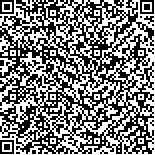徐晖,王春满,王璐璐,等.液压扩张联合放射式体外冲击波治疗肩周炎的疗效观察[J].中华物理医学与康复杂志,2022,44(11):1004-1008
扫码阅读全文

|
| 液压扩张联合放射式体外冲击波治疗肩周炎的疗效观察 |
|
| |
| DOI:10.3760/cma.j.issn.0254-1424.2022.11.009 |
| 中文关键词: 肩周炎 液压扩张 放射式体外冲击波 肩关节功能 疼痛 炎症细胞因子 |
| 英文关键词: Scapulohumeral periarthritis Hydraulic dilatation Extracorporeal shock waves Shoulder function Pain Inflammatory cytokines |
| 基金项目:2021年河北省医学科学研究课题计划项目(20211268) |
|
| 摘要点击次数: 5187 |
| 全文下载次数: 4419 |
| 中文摘要: |
| 目的 观察液压扩张联合放射式体外冲击波治疗肩周炎的疗效。 方法 选取肩周炎患者132例,采用随机数字表法将其分为液压扩张组、冲击波组、联合组,每组44例。液压扩张组采用液压扩张治疗,冲击波组采用放射式体外冲击波治疗,联合组在液压扩张治疗基础上增加放射式体外冲击波治疗。治疗前、治疗3周后(治疗后),评估患者的肩关节活动度,采用日本骨科学会(JOA)肩关节功能评分评估患者的肩关节功能,采用视觉模拟评分法(VAS)评估疼痛程度,采用日常生活活动(ADL)量表评价生活能力,检测血清前列腺素E2(PGE2)、β-内啡肽(β-EP)、白细胞介素6(IL-6)和肿瘤坏死因子α(TNF-α)水平。 结果 治疗后,联合组总有效率(95.45%)高于液压扩张组(70.45%)、冲击波组(81.82%),差异有统计学意义(P<0.05)。与治疗前比较,3组患者治疗后肩关节活动度增加,JOA肩关节功能评分、ADL评分、β-EP水平升高,VAS评分和PGE2、IL-6、TNF-α水平降低(P<0.05)。联合组治疗后上述指标改善程度优于液压扩张组、冲击波组(P<0.05)。治疗期间,3组患者未发生关节内感染、皮肤红肿、麻木、心悸等不良事件。 结论 液压扩张联合放射式体外冲击波可有效治疗肩周炎,促进肩关节功能恢复,提高生活质量,其机制可能与改善PGE2、β-EP、IL-6、TNF-α水平,减轻疼痛和炎症反应有关。 |
| 英文摘要: |
| Objective To observe any curative effect of combining hydraulic dilatation with radial extracorporeal shock waves on scapulohumeral periarthritis. Methods A total of 132 patients with scapulohumeral periarthritis were randomly divided into a hydraulic dilatation group, a shock wave group and a combination group. The three treatments were applied for 3 weeks, before and after which shoulder range of motion was evaluated. Shoulder function was quantified using the Japanese Orthopaedic Association′s (JOA′s) shoulder function scoring, pain was reported using a visual analogue scale (VAS), and ability in the activities of daily living (ADL) was also quantified. Serum prostaglandin E2 (PGE2), β-endorphin (β-EP), interleukin 6 (IL-6) and tumor necrosis factor α (TNF-α) were assayed. Results The treatment response rate of the combination group (95%) was significantly higher than those of the hydraulic dilatation group (70%) and the shock wave group (82%). After the treatment, the average shoulder range of motion, JOA and ADL scores, and β-EP level in all 3 groups had improved significantly, while the average VAS score, and the PGE2, IL-6 and TNF-α levels had decreased significantly, but in each case the improvement in the combination group′s average was significantly greater than those of the other 2 groups. During the treatment there were no such adverse events as intra-articular infection, skin redness, numbness or palpitations. Conclusions Combining hydraulic dilatation with radial extracorporeal shock waves significantly improves the treatment of scapulohumeral periarthritis. It can effectively promote the recovery of shoulder function and improve quality of life. Its greater effectiveness may be related to improving levels of PGE2, β-EP, IL-6 and TNF-α, and relieving pain and inflammation. |
|
查看全文
查看/发表评论 下载PDF阅读器 |
| 关闭 |
|
|
|